I was diagnosed with cancer and given only 6 months to live as a child. I am writing this as a healthy 20 year old to tell YOU about warning signs.
Marit Peterson can’t remember much of her cancer treatment, but the scars – physical and emotional – are a constant reminder.
When Texas was just a baby, her mother noticed a strange spot on the toddler’s finger.
After taking her daughter to several doctors, who rejected her each time, one of them decided to remove the prosthesis ‘for cosmetic reasons’. In July 2006, Marit was two years old.
However, during surgery, doctors realized how serious her case was. Tests revealed that Marit had stage 3 melanoma, the deadliest skin cancer in America.
In fact, Marit’s case was so rare that the top cancer doctors at the MD Anderson Cancer Center in Houston had never seen such a young melanoma patient. Furthermore, there were no survival statistics available for patients her age.
Marit Peterson was diagnosed with melanoma at the age of two and underwent multiple surgeries on her right hand and arm to remove the cancer from her body
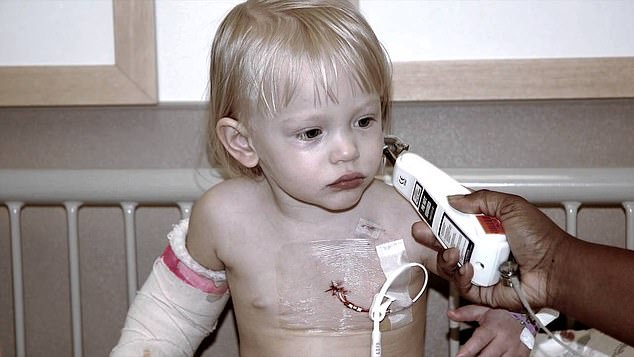
Marit was given high doses of immunotherapy drugs for a year and the toddler had to have a port implanted in her chest to receive the drugs
For adults it was six months.
But now, a 20-year-old medical student at the University of Texas at Austin, Marit told DailyMail.com: ‘Having that perspective and understanding that I’m not supposed to be here has made me who I am today. It’s shaped who I am and what I want to do with the rest of my life.’
Her message? Don’t wait any longer, go to a doctor and don’t take no for an answer.
Marit’s mother, Candy, first noticed a spot on her baby’s hand when she was three months old.
Her father had survived melanoma and Candy thought the girl’s birthmark looked just like his.
Although Candy, who was diagnosed with cancer at age 34, was “suspicious,” she didn’t immediately take her baby to the doctor.
In the US, only 500 children are diagnosed with childhood melanoma each year, so in her eyes it was highly unlikely.
Instead, she kept a close eye on the area. But it started to grow, and that’s when Candy took her daughter to have it checked out.
Multiple doctors told her it was benign and that they would not remove it until one finally agreed. But Candy said he only agreed because it was ‘because you want your daughter to look beautiful. I get it; it’s cosmetic,’ Marit told DailyMail.com.
However, once in the operating room, the surgeons discovered that the mole was more serious than they thought and immediately sent the mole for a biopsy.
Candy’s mother was shocked by the diagnosis, as her two-year-old daughter had little exposure to the sun.
But Dr. Michelle Henry, a dermatologist and winner of the Melanoma Research Foundation’s (MRF) Excellence in Prevention Award for her work on melanoma, told DailyMail.com that melanoma is primarily caused by the sun, but that genes also play a role. People with a family history of melanoma are at a higher risk of developing the cancer.
She said, “If you have a family history, you have to be even more vigilant than people who just follow the standard rules (for sunscreen).”
In stage 3B melanoma, the cancer had spread from Marit’s right hand to the lymph nodes in her right armpit. She had to undergo multiple surgeries.
She was then put on high doses of immunotherapy drugs for a year. The toddler had to have a port implanted in her chest to receive the drugs for a month, and then her mother had to give her injections three times a week for a year.
Marit told this website: ‘The treatment made me extremely ill with a fever of 105 (degrees) and I was close to having an attack. I started losing my hair. It was scary. At night (I had) nightmares.’
Although she has now been declared cancer-free, the scars on her body are still a daily reminder of her battle.
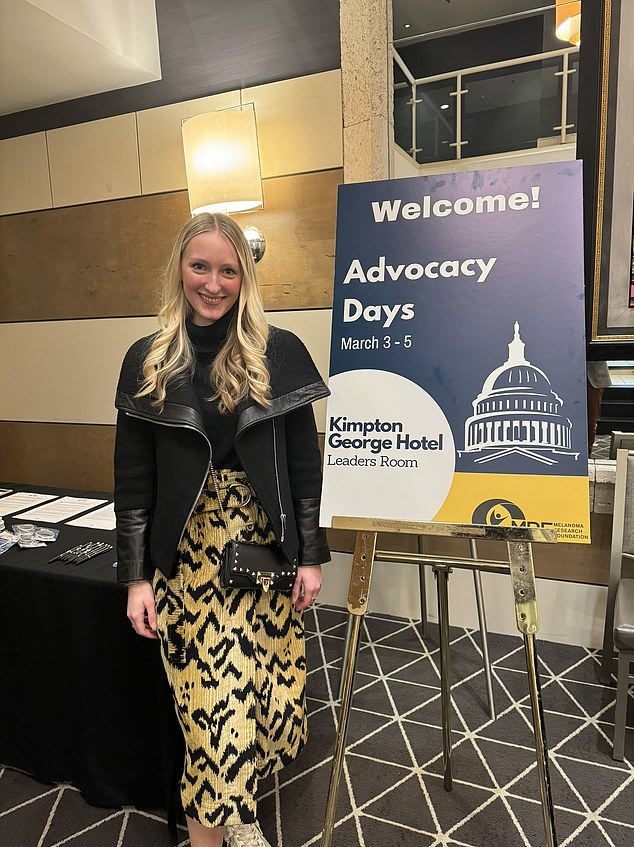
Marit is an outspoken advocate for melanoma prevention, awareness and research and will receive this year’s Courage Award at the Melanoma Research Foundation Gala in October
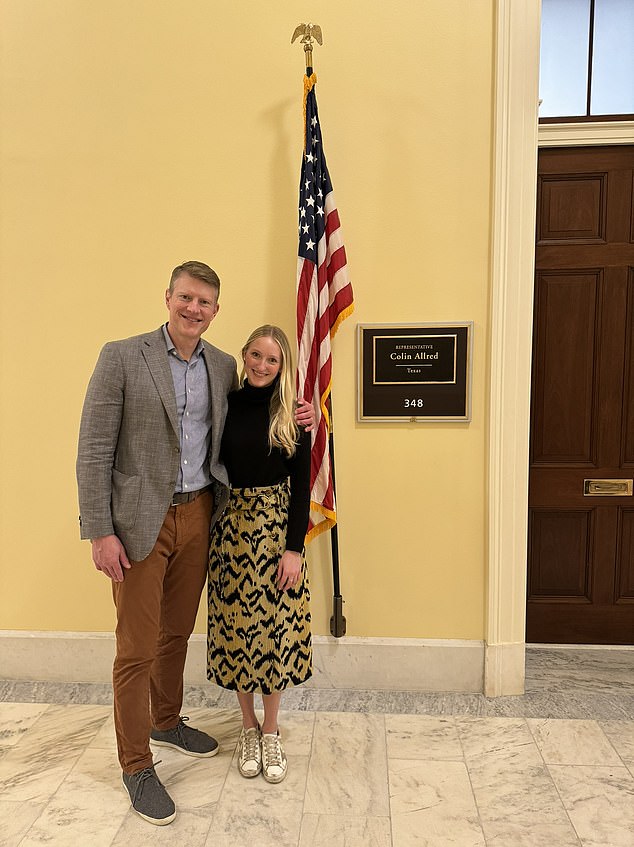
Marit has traveled to Washington, DC to speak with lawmakers about melanoma funding and worked with the FDA to get new sunscreen ingredients approved
In addition, the surgery on her armpit caused nerve damage, which is why she is still in pain.
She is also concerned about her fertility, as doctors are unsure whether her treatment has affected her ability to conceive.
Marit told DailyMail.com: ‘I really want to be a mother. I love my mother. She is my best friend and I want to be like that with my children.’
Since her pre-teens, Marit has spoken openly about her experiences, even traveling to Capitol Hill to speak with lawmakers about funding for melanoma, the deadliest form of skin cancer that kills nearly 8,300 people each year, according to the MRF.
Her family has raised more than $3 million for melanoma research, which has identified genes that may increase the risk of the disease. The new genes have been dubbed the “Marit Peterson genes.”
Now Marit’s journey and efforts have made her the recipient of the Courage Award at next month’s annual meeting. MRF Galaand she is excited to continue her advocacy.
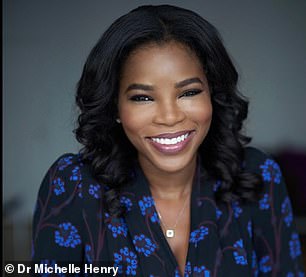
Dr. Michelle Henry said people with a family history of melanoma should be extra vigilant when it comes to sun care
The American Cancer Society estimates that 200,300 people will be diagnosed with melanoma in 2024.
The average lifetime risk of developing melanoma is three percent, or one in 33 people. However, the risk is higher if someone has a family history of the disease.
There are different types of melanomas: cutaneous, which develops on the skin and is the most common; ocular, which develops in the eyes; and mucous membrane, which can develop in the sinuses, nasal passages, mouth, or vagina.
Melanomas also occur in children, adolescents, and young adults.
Rates of new melanoma vary: in people under 50, rates have remained stable in women and have declined about one percent per year in men since the early 2000s.
The five-year survival rate for melanoma is 94 percent, but this drops to 35 percent for melanoma that has spread. It can be even lower, depending on how far the cancer has progressed.
It is advisable to have the skin of the entire body checked annually to detect cancer at an early stage. However, you can also do regular checks at home and visit a dermatologist if you suspect something suspicious.
“Trust yourself. I tell my patients, ‘You know your body best, and part of advocating for yourself is not taking no for an answer,’” Dr. Henry said.

Marit (fourth from left) is a pre-med student at the University of Texas at Austin and is a member of the Zeta Tau Alpha sorority
When performing a self-test, people should pay attention to the ABCDEs of skin cancer.
A stands for asymmetry: Is the mole symmetrical all around? Melanomas are often uneven and have halves of different sizes and shapes.
B stands for border: Does the mole have clear borders? Melanomas often have irregular or jagged borders.
C stands for color: Is the color the same throughout the mole? Melanomas often have multiple shades.
D stands for diameter: How big is the mole? They are usually about the size of the end of a pencil, and melanomas are usually larger.
Finally, E stands for evolving: Has the mole changed over time? Most benign moles stay the same year after year, but melanomas can grow in size and shape and change color over time.
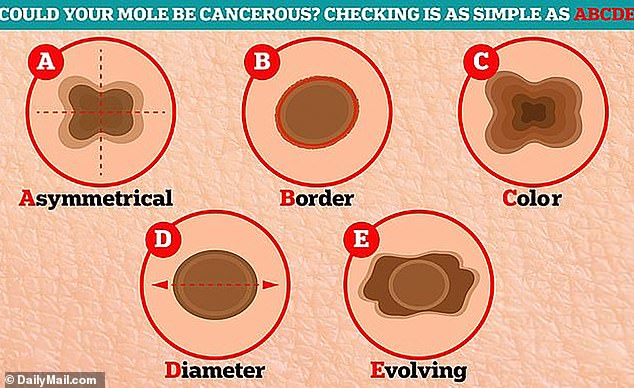
Annual full body skin checks are recommended, but people can perform periodic self-checks at home. When performing the check, people should pay attention to the ABCDEs of skin cancer
Dr. Henry is excited about new screening and treatment methods that go beyond a skin exam. For example, a new medical tape that noninvasively removes spots from a suspicious mole and sends them for genetic testing to assess the risk of melanoma.
She said she sees many patients who are “so anxious” about developing melanoma that they “have trouble sleeping and can’t concentrate.”
Still, she is hopeful about the future of prevention and treatment: ‘We are getting better and better at diagnosing and identifying risks more accurately.
‘And we are getting better and better at prevention: we are finding moles earlier and earlier, visualizing them earlier and looking at genetic data to give us information about how this mole behaves.’
Marit still dreads going to MD Anderson Cancer Center every year, but she is looking forward to graduating, completing her medical degree, and going on to study dermatology so she can help patients like her.
She said: ‘Some days I wake up and I’m afraid I’ve got cancer again and because I have to go back every year, (doctors) have never told me I’m cancer free. They just say there’s no evidence of the disease.
“I think medicine and technology are getting better and better and there are so many things I can do to help. So I try to look at the positive side.”
